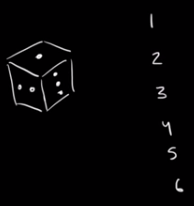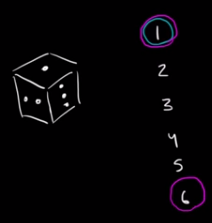Probability
What is Probability?
Probability is simply how likely something is to happen.
Whenever we’re unsure about the outcome of an event, we can talk about the probabilities of certain outcomes—how likely they are. The analysis of events governed by probability is called statistics.
The best example for understanding probability is flipping a coin:
There are two possible outcomes—heads or tails.
What’s the probability of the coin landing on Heads? We can find out using the equation

In this case:

Probability of an event = (# of ways it can happen) / (total number of outcomes)
P(A) = (# of ways A can happen) / (Total number of outcomes)
Example 1
There are six different outcomes.

What’s the probability of rolling a one?

What’s the probability of rolling a one or a six?

Using the formula from above:

What’s the probability of rolling an even number (i.e., rolling a two, four or a six)?

Tips
- The probability of an event can only be between 0 and 1 and can also be written as a percentage.
- The probability of event
is often written as. - If
, then eventhas a higher chance of occurring than event. - If
, then eventsandare equally likely to occur.
No comments:
Post a Comment